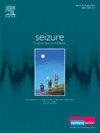弥散性MRI生物标志物用于预测婴儿癫痫性痉挛综合征的非病变MRI治疗结果
IF 2.8
3区 医学
Q2 CLINICAL NEUROLOGY
引用次数: 0
摘要
背景:癫痫性痉挛综合征(IESS)是一种破坏性的发育性癫痫性脑病(DEE),患者表现为弥漫性白质改变和结构重塑。然而,这些结构变化与脑网络特性之间的相关性,或它们对MRI非病变性IESS患者治疗效果的影响尚不清楚。方法采用弥散MRI固定基分析(FBA)和结构连通性图论分析对IESS患者进行回顾性研究,纳入26例2 ~ 12个月的非病变IESS患者和120例年龄匹配的对照组。我们进一步研究了IESS队列中抗癫痫药物(ASM)应答者和无应答者之间的差异。在3个年龄组(2-5个月、6-7个月和8-12个月)中进行FBA,通过纤维密度(FD)、纤维横截面(FC)和纤维密度和横截面(FDC)的组合来评估微观和宏观尺度上的白质完整性。图论分析用于评估全局和局部网络特性。结果与对照组相比,IESS患者在主要白质束(包括皮质脊髓束、胼胝体、上纵束、视辐射和丘脑辐射)上表现出明显较低的FD、FC和FDC(家庭误差校正,p <;0.05)。图论分析揭示了脑网络特性的显著改变,特别是在2-5个月的年龄组,其中IESS患者的平均聚类系数显著降低(p <;0.001, d = -0.74)和整体效率(p = 0.001, d = -0.69)。小世界网络分析表明,在IESS患者中,特别是在6-7个月的年龄组中,向更随机的网络结构转变(p = 0.001, d = -0.6182)。在二次分析中,ASM治疗应答者在控制癫痫发作的关键区域(如海马)显示出更高的FD值。与此同时,ASM治疗无反应者在脑桥和脑干等区域表现出增加的FC。虽然亚组差异没有统计学意义,但趋势表明白质完整性和网络组织可能影响治疗结果。结论非病变性IESS患者白质完整性和网络连通性普遍改变,初步证据表明脑结构差异与治疗反应性之间存在关联。这些发现强调了先进的神经影像学分析在指导IESS个性化干预方面的潜力。本文章由计算机程序翻译,如有差异,请以英文原文为准。
Diffusion MRI biomarkers for predicting treatment outcomes in infantile epileptic spasms syndrome with non-lesional MRI
Background
Infantile epileptic spasms syndrome (IESS) is a devastating developmental epileptic encephalopathy (DEE) and patients exhibit diffuse white matter alterations and structural remodeling. However, the correlation between these structural changes and brain network properties, or their effect on the efficacy of treatment outcomes in MRI non-lesional IESS patients is not clear.
Method
This retrospective study was conducted on IESS patients using fixel-based analysis (FBA) of diffusion MRI and graph theory analysis of structural connectivity, involving 26 non-lesional IESS patients aged 2 to 12 months and 120 age-matched controls. We further examined the differences between antiseizure medication (ASM) responders and non-responders within the IESS cohort. FBA was performed across three age groups (2–5, 6–7, and 8–12 months) to evaluate white matter integrity at the micro- and macroscale using fiber density (FD), fiber cross-section (FC), and combined fiber density and cross-section (FDC). Graph theory analysis was used to assess global and local network properties.
Results
When compared to the control group, IESS patients exhibited significantly lower FD, FC, and FDC across major white matter tracts, including the corticospinal tract, corpus callosum, superior longitudinal fasciculus, optic radiations, and thalamic radiations (family-wise error-corrected, p < 0.05). Graph theory analysis revealed significant alterations in brain network properties, particularly in the age group of 2–5 months, where IESS patients exhibited a significantly lower mean clustering coefficient (p < 0.001, d = -0.74) and global efficiency (p = 0.001, d = -0.69. Small-world network analysis demonstrated a shift toward a more randomized network structure in IESS patients, particularly in the age group of 6–7 months (p = 0.001, d = -0.6182). In the secondary analysis, ASM treatment responders showed higher FD values in regions critical for seizure control, such as the hippocampus. Meanwhile, the ASM treatment non-responders exhibited increased FC in areas such as the pons and brainstem. Although subgroup differences did not achieve statistical significance, trends suggest that white matter integrity and network organization may influence treatment outcomes.
Conclusion
The results highlight widespread changes in white matter integrity and network connectivity in non-lesional IESS patients, with preliminary evidence suggesting a relationship between structural brain differences and treatment responsiveness. These findings underscore the potential of advanced neuroimaging analyses to guide personalized interventions in IESS.
求助全文
通过发布文献求助,成功后即可免费获取论文全文。
去求助
来源期刊

Seizure-European Journal of Epilepsy
医学-临床神经学
CiteScore
5.60
自引率
6.70%
发文量
231
审稿时长
34 days
期刊介绍:
Seizure - European Journal of Epilepsy is an international journal owned by Epilepsy Action (the largest member led epilepsy organisation in the UK). It provides a forum for papers on all topics related to epilepsy and seizure disorders.
 求助内容:
求助内容: 应助结果提醒方式:
应助结果提醒方式:


